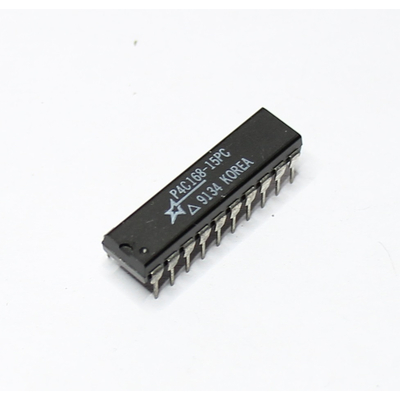

2009: In February, Samsung validated 40 nm DRAM chips, considered a "significant step" towards DDR4 development since in 2009, DRAM chips were only beginning to migrate to a 50 nm process.

DDR4 was described as involving a 30 nm process at 1.2 volts, with bus frequencies of 2133 MT/s "regular" speed and 3200 MT/s "enthusiast" speed, and reaching market in 2012, before transitioning to 1 volt in 2013. 2007: Some advance information was published in 2007, and a guest speaker from Qimonda provided further public details in a presentation at the August 2008 San Francisco Intel Developer Forum (IDF).

The high-level architecture of DDR4 was planned for completion in 2008.

The DDR4 standard allows for DIMMs of up to 64 GB in capacity, compared to DDR3's maximum of 16 GB per DIMM. The primary advantages of DDR4 over its predecessor, DDR3, include higher module density and lower voltage requirements, coupled with higher data rate transfer speeds. Released to the market in 2014, it is a variant of dynamic random-access memory (DRAM), of which some have been in use since the early 1970s, and a higher-speed successor to the DDR2 and DDR3 technologies.ĭDR4 is not compatible with any earlier type of random-access memory (RAM) due to different signaling voltage and physical interface, besides other factors.ĭDR4 SDRAM was released to the public market in Q2 2014, focusing on ECC memory, while the non-ECC DDR4 modules became available in Q3 2014, accompanying the launch of Haswell-E processors that require DDR4 memory. Double Data Rate 4 Synchronous Dynamic Random-Access Memory ( DDR4 SDRAM) is a type of synchronous dynamic random-access memory with a high bandwidth (" double data rate") interface.


 0 kommentar(er)
0 kommentar(er)
